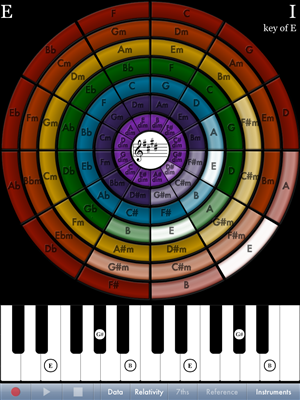This was one of the questions planted in software developer Troy A. Peterson's head after hearing a keynote by author and accessibility advocate Wendy Chisholm. The focus of her speech was, "When you create technology for people with limited abilities you pump up everyone elses abilities". Peterson decided his next technology projects were going to be focused on information accessibility and turned to his personal history in learning music.
25 years ago he was given his first guitar by a deaf foster father. "He knew music was important to me but there was no framework we could use communicate about it." Peterson who had a long time interest in educational technology and personal struggles understanding music theory, thought he might be onto something.
"Many self taught musicians avoid learning music theory simply because it's complex and confusing. There's nothing in the world more confusing than musical notes on a page. Universal design isn't for people with disabilities. It's for making complex information accessible to anyone." with that in mind he set to work designing his app.

The keys to creating a practical visual design were the underlying physics and geometry of music. The Circle of Fun app uses a circle graph cut into 12 segments, and the 7 colors of the visual light spectrum (ROYGBIV) to represent the 12 musical "keys" and the 7 "scale degrees" of the, do re mi fa so la ti or Solfege System. Additionally, the app is designed to make multiple simultaneous notes or harmonies accessible to those who can not otherwise play an instrument.
This is not the first time color has been used to describe music, but it is the first time it's been specifically focused on accessibility. Peterson, who spent 6 months researching the underlying theory, says he's pleased with how easily the app can be used to convey theory to people with normal hearing.
While a completely accessible musical reference may still be a little further down the development path his bet on accessability seems to have paid off. The app is already showing up in music classrooms aided by free curricula and online support materials. "Once a music teacher grasps what the wheel represents they want to use it as a teaching and communication aid because it makes the information so rapidly accessible to music students. It's also a great way for students to teach other students."
The iPad was a natural platform choice for this new approach. Apple has a history of incorporating assistive technologies into its products. Pinch and zoom magnification and the onscreen keyboard were designed for those with low vision and Siri, Apple's new voice assistant for iPhone, were both created to help those who might otherwise have difficulty accessing information.
Disclosure: This app is independently developed and self funded. The app, teaching materials and lesson plans are free with no ads but the instrument upgrades are $3.99 for piano, bass an guitar. These are not needed for the theory lessons.
Taken from pitchengine.com/brand/.

